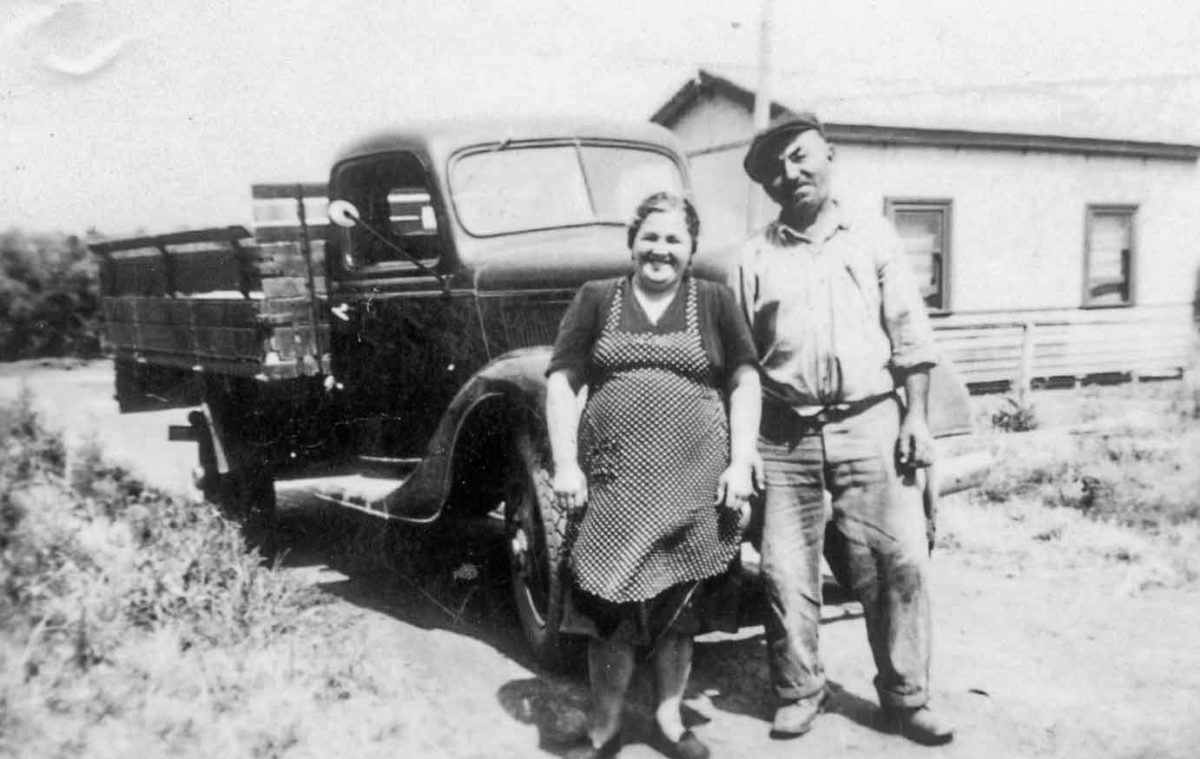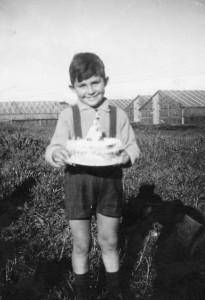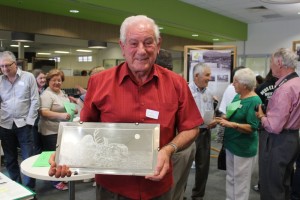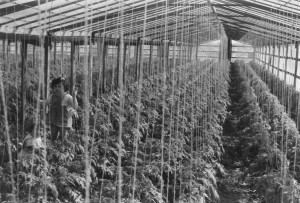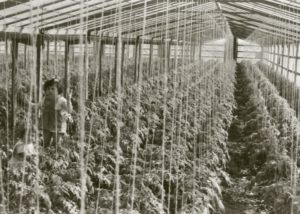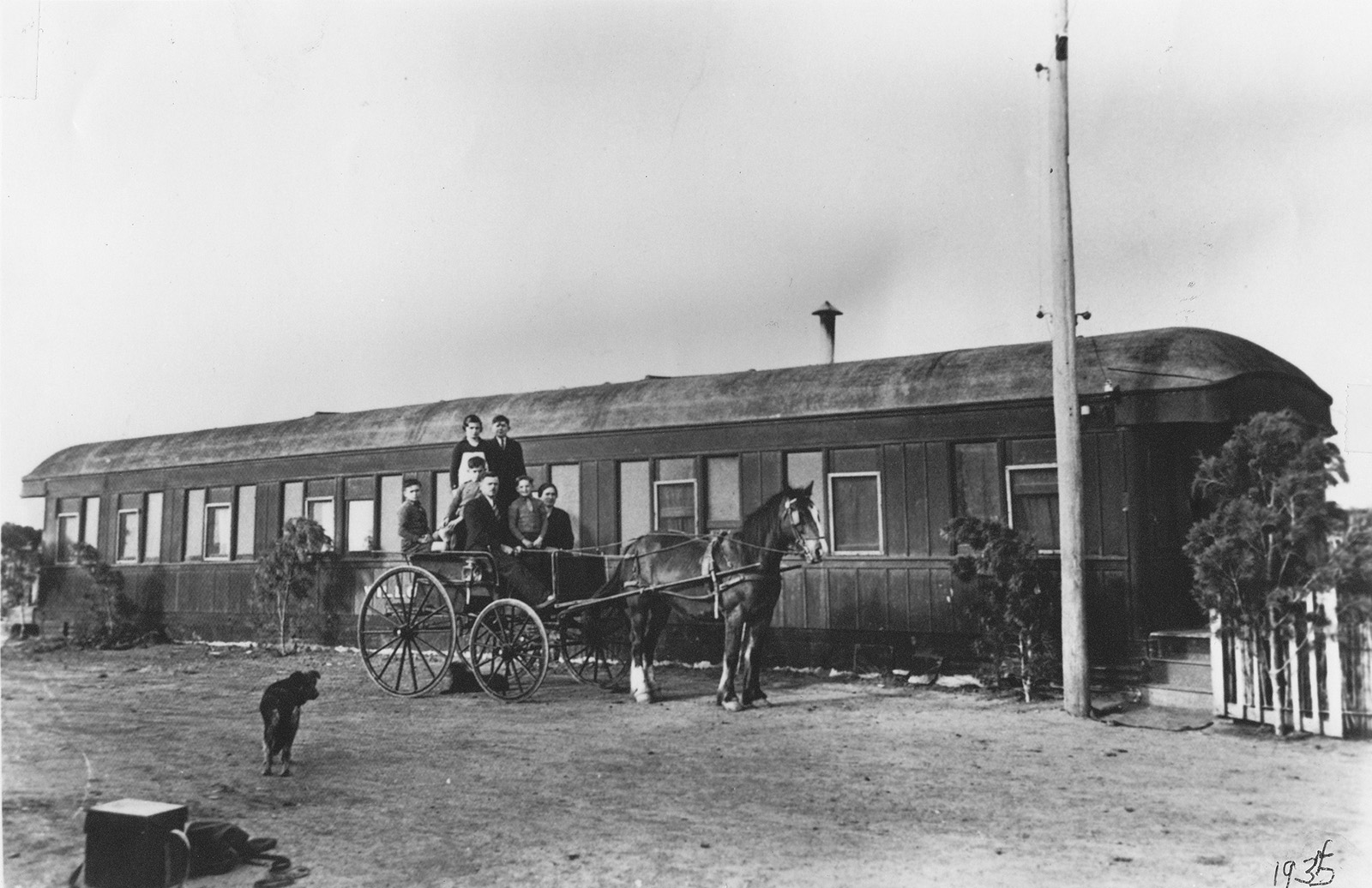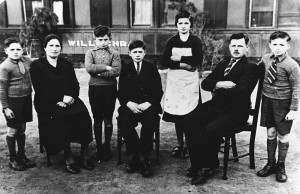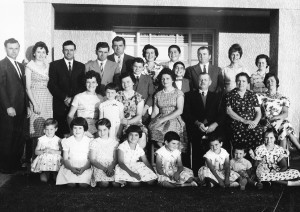Information for this blog comes from oral history interviews with family members and archival research …
Giovanni Luigi, born 7 November 1886, was born at Riese, Province of Treviso and grew up in Caselle di Altivole. He married Maria Tessari in 1907 and their daughter, Angelina, was born in 1908. After completing National Service, he worked in Canada as a miner 1910 – 1917 when he returned to Italy. After the death of his wife, he married Costantina Visentin in 1919. They had four children: Luigi, Vito, Romildo and Virginia.
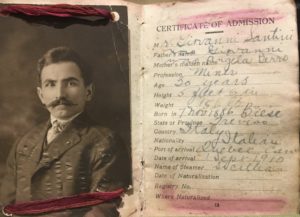
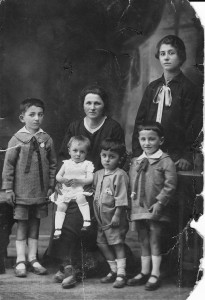
Giovanni arrived Adelaide on 27th August 1927 per ‘Citta di Genova’. Also on board were Secondo Tonellato from Caselle di Altivole and Angelo Piovesan from Ponzano Veneto. Giovanni lived at Jervois West via Tailem Bend, about 90 kilometres south east of Adelaide. He worked for a Bulgarian-Australian farmer from 1927 to 1941. Other veneti lived in that area.
After eight years Giovanni brought his wife and four children to Australia. They arrived in Adelaide per ‘Viminale’ on 31 December 1935. Luigi was 14 years; Vito, 12 years; Romildo, 11 years and Virginia, 8 years, and they lived at Jervois for the first years.
The family moved to Adelaide in 1941 and lived with Gino Berno and his wife and sons in a large old villa set on Valetta Road. Alberto and Pietro Berno lived on Grange Road at the time. The Santins grew a range of vegetables including celery, tomatoes and potatoes on the ten-acre property that extended to the River Torrens. All four children assisted in the market gardens.
Marriages in the Santin family:
· Angelina to Pietro Compostella (c1931)
· Luigi to Rosina Tonellato (1945)
· Vito to Anna Mattiazzo (1949)
· Romildo to Clara Oliviero (1950)
· Virginia to Oscar Mattiazzo (1949)
In 1950, the Santin families moved to Frogmore Road, Kidman Park where Luigi, Vito and Romildo and their wives bought 12 acres and set up an extensive market gardening business. The main crops were tomatoes, beans, potatoes and cucumbers. Giovanni died in 1961 and Costantina, in 1970.

The Santin brothers with their wives, Rosina, Anna and Clara, farmed on Frogmore Road until late 1960s and were well-known for hosting Sunday afternoon bocce games. They moved the business to Bolivar in the 1960s. Luigi died in 1988 and Rosina died in 2009; Vito died in 2011; Romildo died in 2007 and Clara in 2005. Virginia Mattiazzo died in 1991 and Oscar Mattiazzo in 2017. Dean, the son of Vito and Anna, died in 2019.
The following people related to the Santin family have been interviewed or videoed for the project: Oscar Mattiazzo, Maria Mazzarolo nee Compostella; Diana Panazzolo nee Santin; Christine Rebellato nee Mattiazzo; Dean Santin.
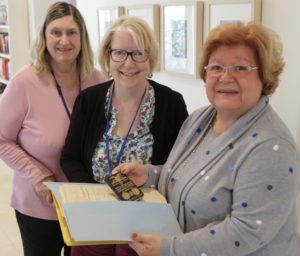
In November 2019, the Santin family donated some documents and photos belonging to Giovanni and Costantina to the State Library of South Australia.
Madeleine Regan
23 February 2020
La famiglia Santin
Giovanni Luigi Santin, nacque il 7 November 1886, a Riese, provincia di Treviso ed è cresciuto a Caselle di Altivole. Sposò Maria Tessari nel 1907 e la loro figlia, Angelina, naque nel 1908. Giovanni lavorò in Canada come minatore dal 1910 al 1917 e dopo ritornò in Italia. Quando la moglie morì, Giovanni sposò Costantina Visentin nel 1919. Giovanni e Costantina ebbero quattro figli: Luigi, Vito, Romildo e Virginia.


Giovanni arrivò ad Adelaide il 27 agosto 1927 con la nave ‘Citta di Genova’. A bordo c’era anche con paesano di Secondo Tonellato, ed anche Angelo Piovesan da Ponzano Veneto. Giovanni visse a Jervois, distante 90 chilometri sud est da Adelaide. Lavorò per un contadino bulgaro dal 1927 al 1941.
Dopo otto anni, Giovanni richiamò la moglie e i quattro figli. Arrivarono in Australia con la nave ‘Viminale’ il 31 dicembre 1935. Luigi aveva 14 anni, Vito, 12 anni, Romildo, 11 anni e Virginia, 8 anni. La famiglia visse a Jervois dove Giovanni continuò lavorare nella fattoria del tedesco. Altre famiglie Venete abitavano nella zona.
Nel 1941 la famiglia si trasferì ad Adelaide e visserò con un altro Veneto, Gino Berno in una vecchia villa vicino al fiume Torrens circa otto chilometri di distanza da Adelaide. I cugini di Gino, Alberto e Pietro Berno abitavano allora in Grange Road. La famiglia Santin coltivò varie verdure includendo sedano, pomodori, cavolfiore e patate in una proprietà di dieci acri che si estendeva fino al fiume. Tutti i quattro figli assisterono lavorarono la famiglia come agricoltori.
Matrimoni nella famiglia Santin:
*Angelina sposò Pietro Compostella (c1931)
*Luigi sposò Rosina Tonellato (1945)
*Vito sposò Anna Mattiazzo (1949)
*Romildo sposò Clara Oliviero (1950)
*Virginia sposò Oscar Mattiazzo (1949)
In aprile 1952, le tre famiglie Santin si trasferirono in Frogmore Road, Kidman Park mezzo chilometro di distanza di dove abitavano prima. I genitori delle famiglie Santin anche si trasferirono con loro. Lui, e Rosina, Vito e Anna e Romildo e Clara comprarono 12 acri e costruirono un grande market garden. Le verdure più coltivate erano pomodori, fagioli, patate e cocomeri. Giovanni morì il 19 aprile 1961, e Costantina, il 6 agosto 1970.
Le famiglie Santin lavarorano in Frogmore Road fino alla fine del 1960. Erano molto conosciuti per giocare a bocce la domenica pomeriggio con i paesani e gli amici a casa loro. Circa nel 1975 trasferirono la fattoria a Bolivar, distante 24 chilometri al nord di Adelaide.

Lui morì nel 1988 e Rosina nel 2009, Vito morì nel 2011, Romildo nel 2007 e Clara nel 2005. Virginia Mattiazzo morì 1991 ed Oscar Mattiazzo nel 2017. Dean Santin e’ morto 2019.
Queste persone sono state intervistate o registrate per questo progetto: Oscar Mattiazzo, Maria Mazzarolo nee Compostella, Diana Panazzolo nee Santin, Christine Rebellato nee Mattiazzo, Anna Santin nee Mattiazzo, Dean Santin.
La famiglia Santin in novembre 2019 ha donato i documenti della famiglia pioniera all’archivio statale (State Library of South Australia)

Madeleine Regan
il 23 febbraio 20120
